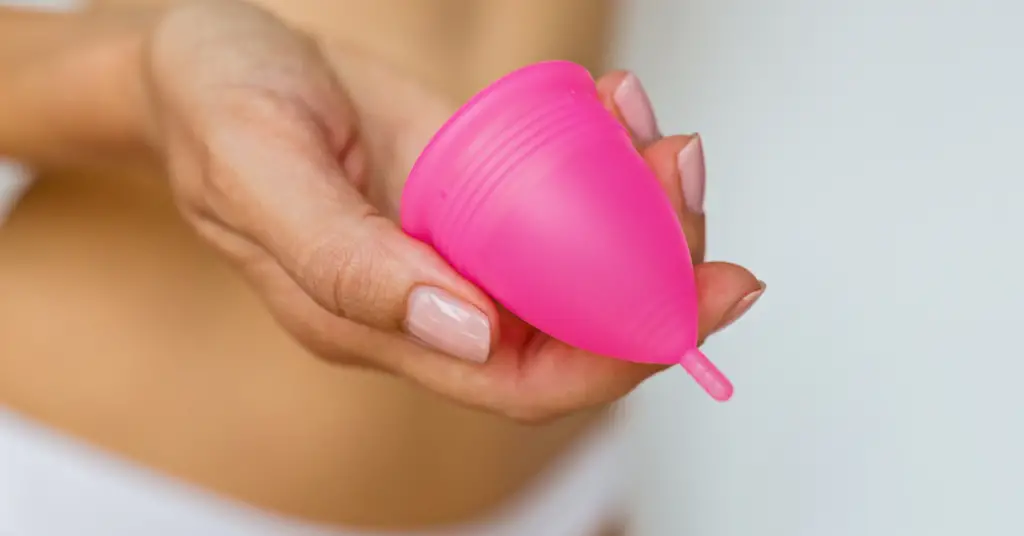Ladies looking to lessen the waste produced during their menstrual cycle are in luck—there are several effective and comfortable products on the market today. Although the vast majority of women use disposable options each month, there are other ways to take care of your menstrual needs; namely, menstrual cups and reusable cloth pads. Try them, and I’m willing to bet you won’t miss your tampons or pads.
The garbage caused by disposable pads and tampons each year is absolutely a problem on a massive scale.
20 billion pads, tampons, applicators, and wrappers are being sent to North American landfills each year. It’s an incredible amount of waste, and continuing the cycle of using menstrual disposables is as senseless as using plastic water bottles instead of stainless steel ones, or plastic shopping bags instead of cloth versions.
If the garbage isn’t enough to convince you to give reusables a try, perhaps a cost-savings analysis will be. One menstrual cup that costs a few dollars can last for many years.
Menstrual reusables make life easier because you never have to worry about running out of them. My Cup stays tucked in my purse where I used to keep tampons. It’s small and discreet.
Menstrual cups are small, cup-shaped pieces of latex or silicone that are inserted like tampons to collect blood. Unlike tampons, which are absorbent, menstrual cups catch blood and need to be emptied every so often. Trust me, I understand what a huge leap of faith it is to try a menstrual cup the first time. I’m pretty active, and until that point had never used anything but tampons and pads. I was worried it would be gross, messy, and uncomfortable to wear. Luckily my worry was unwarranted, and the menstrual cup became one of my new favorite things.
Basically, squeeze it into a U-shaped form, insert it, and make sure it opens. The cup can be worn for up to twelve hours, depending on your flow. It took me some practice to get the thing in and out the first few times. I’ve also learned that I prefer to remove and insert the cup in the shower.
When you remove a full menstrual cup, you do need to dump it somewhere—sink, toilet, or shower—and then wash the cup out before reinserting. This can be a slightly messy procedure, so I just take care of the whole chore while bathing. I’ve found that I truly can wear a menstrual cup for twelve full hours, even on my heaviest days. I’ve not yet had the thing overflow, and I do start to feel a difference as it fills up, so I don’t worry this will happen.
I’ve worn my cup camping in the woods while backpacking two days away from civilization. You can easily go hiking, running, and swimming wearing your cup. I wear the thing just like I used to wear tampons (but with far fewer changes), and I will never go back.
Reusable menstrual pads are your other zero-waste option. Unlike disposable menstrual pads, which are made from a composite of plastic, these pads are made from soft organic materials. Like disposable pads, they come in a wide variety of shapes, sizes, colors, and thicknesses, including panty liners. Instead of a peel-off adhesive side that sticks to your panties, reusable pads have wings that wrap around and snap beneath the gusset of your underwear. Most reusable pads that I’ve seen are designed like an envelope with reusable liners—pull the pad open and you can replace, stack, or add liners inside the pad to adjust for your flow.
In addition to my Menstrual Cup, I’ve also purchased a set of pads and been quite happy with the results. Occasionally I opt to wear the pad at night, and I’ve found these to be much more comfy and reliable than disposable pads. Because they use an actual metal snap instead of a sticker, they do not shift. The fleece fabric feels nicer than the material in a disposable pad, too

Erzsebet Frey (Eli Frey) is an ecologist and online entrepreneur with a Master of Science in Ecology from the University of Belgrade. Originally from Serbia, she has lived in Sri Lanka since 2017. Eli has worked internationally in countries like Oman, Brazil, Germany, and Sri Lanka. In 2018, she expanded into SEO and blogging, completing courses from UC Davis and Edinburgh. Eli has founded multiple websites focused on biology, ecology, environmental science, sustainable and simple living, and outdoor activities. She enjoys creating nature and simple living videos on YouTube and participates in speleology, diving, and hiking.

